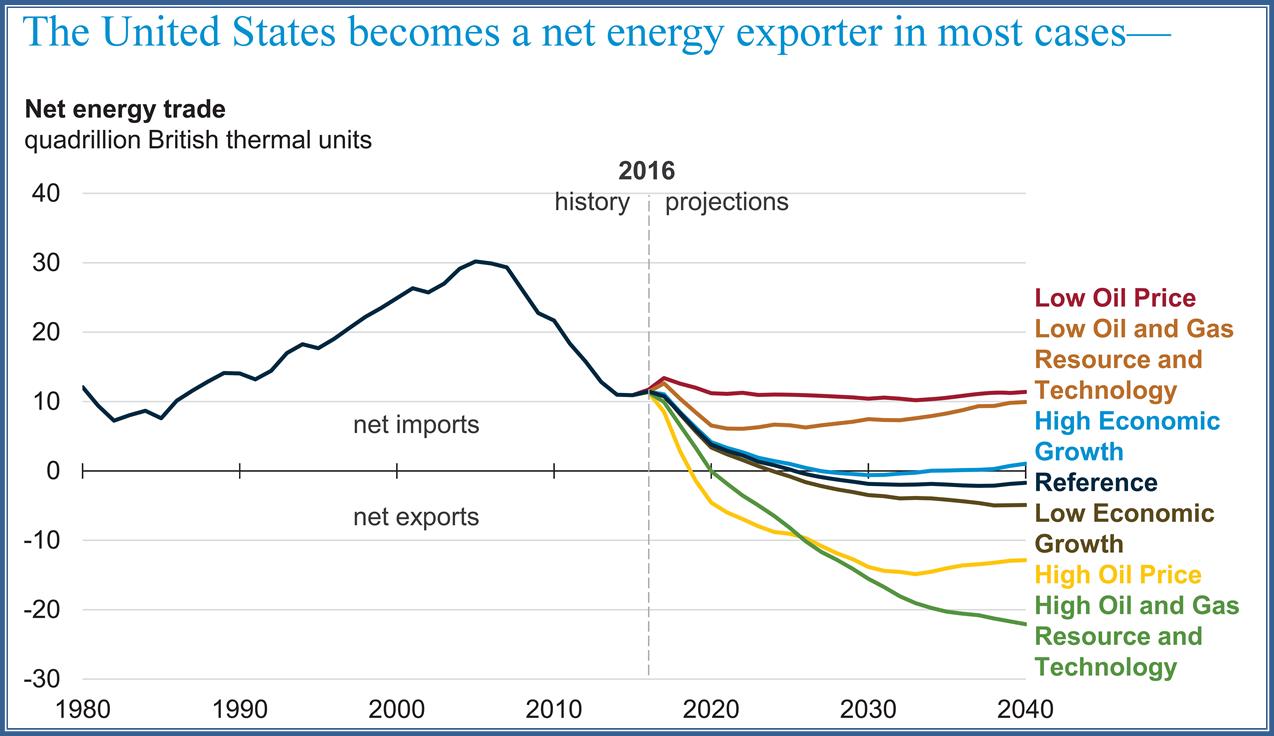
The Energy Information Administration (EIA), the statistical arm of Department of Energy, last week released its new Annual Energy Outlook 2017 (AEO2017). The AEO’s Reference Case represents EIA’s best prognostication (or educated guess—take your pick) of what energy markets—including supply, demand, imports, exports, fuel mix, prices etc.—will look like in the United States out to 2050.
There has been quite a bit of comment in the press about EIA’s statement that “The United States is projected to become a net energy exporter by 2026 in the Reference case Projections.” The EIA chart nearby has the story. What gives this trend political relevance is the fact that President-Elect Donald Trump has made energy independence a key policy goal for his administration.
Of course, EIA’s announcement isn’t news to readers of the Energy Institute’s U.S. Energy Security Risk Index. In 2015, our president and CEO Karen Harbert wrote:
“Greater domestic energy production and improved energy efficiency have created the real possibility that U.S. energy self-sufficiency is within reach.”
Karen also noted how far-fetched this notion seemed a few short years ago. Back in 2008, for example, EIA was projecting that the United States would be importing between 25% and 30% of the energy it used for the foreseeable future. Thanks to the combination of hydraulic fracturing, horizontal drilling, advanced seismic imaging, and an entrepreneurial spirit, the nation’s once-bleak energy future has brightened considerably. Now that’s something to celebrate.

